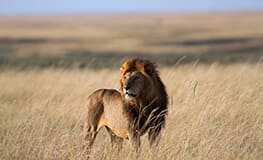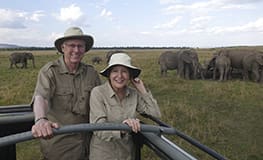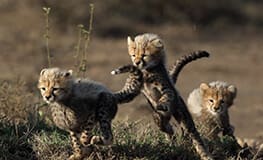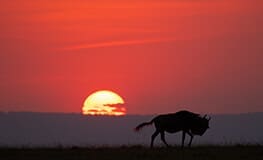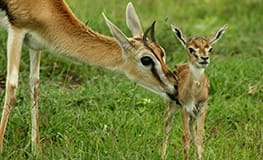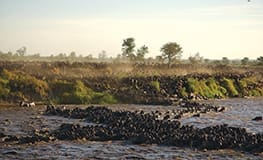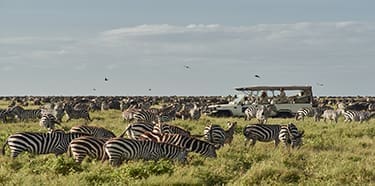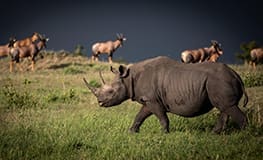Serengeti National Park
In the Maasai language, Serengeti means “endless plains,” a very appropriate name for this Tanzanian national park. Most of the park consists of vast, open plains occasionally broken by rocky outcrops (kopjes). As host to the annual Great Migration, it's arguably one of the most famous national parks in the entire world. This awe-inspiring phenomenon features approximately 1.3 million wildebeest, 200,000 zebra, and 250,000 Thomson’s gazelle. And of course, plenty of lion prides and fleet-footed cheetah.
From December to April, most migratory animals are in the park's southeast the western part of the Ngorongoro Conservation Area. This is when both zebra and wildebeest calving occurs. By April or May, the southeast’s short-grass plains have dried up, so they proceed towards the Western Corridor and the Grumeti Reserve. It’s quite a site to see wildebeest abreast in about 6 to 10 columns several miles long as they move towards the northwest. Passing the Central Serengeti in June, they then arrive in the park's extreme north around mid-July. In the process, they famously cross the crocodile-infested Grumeti and Mara rivers. Both the park's north and central parts have great year-round game viewing. Once the rains begin around late October, the herds head to the short-grass plains of the Southern Serengeti and Ngorongoro Conservation Area.
The quantity and diversity of wildlife within the Serengeti is remarkable. Commonly seen wildlife include elephant, buffalo, Maasai giraffe, leopard and spotted hyena. In the Grumeti Reserve and far north, there's even a growing population of black rhino. There are nearly 500 species of birds here.
Along the Serengeti's periphery are several private reserves and concessions. Unlike the rest of the Serengeti, open vehicles and guided walks are not prohibited. North of the Western Corridor is the Grumeti Reserve. Sandwiched between the Ngorongoro Conservation Area and the southern Serengeti are the Maswa Game Reserve and Mwiba Wildlife Reserve. All three offer an incredibly exclusive and luxurious safari experience. The eastern part of the park only safari operations in recent years. Previously, it was limited to research activities. But even now, only a handful of camps and lodges occupy its expansive plains. Guests staying elsewhere in the Serengeti cannot game view there.
Unique to Tanzania are seasonal mobile camps. Most of them split their time between the Northern and Southern Serengeti when the migration is present. When the migration moves on, the staff will disassemble the camp and reassemble in its new location. Despite their impermanent nature, many of them have en suite bucket showers and flush toilets. Some of them could even be described as luxurious.

